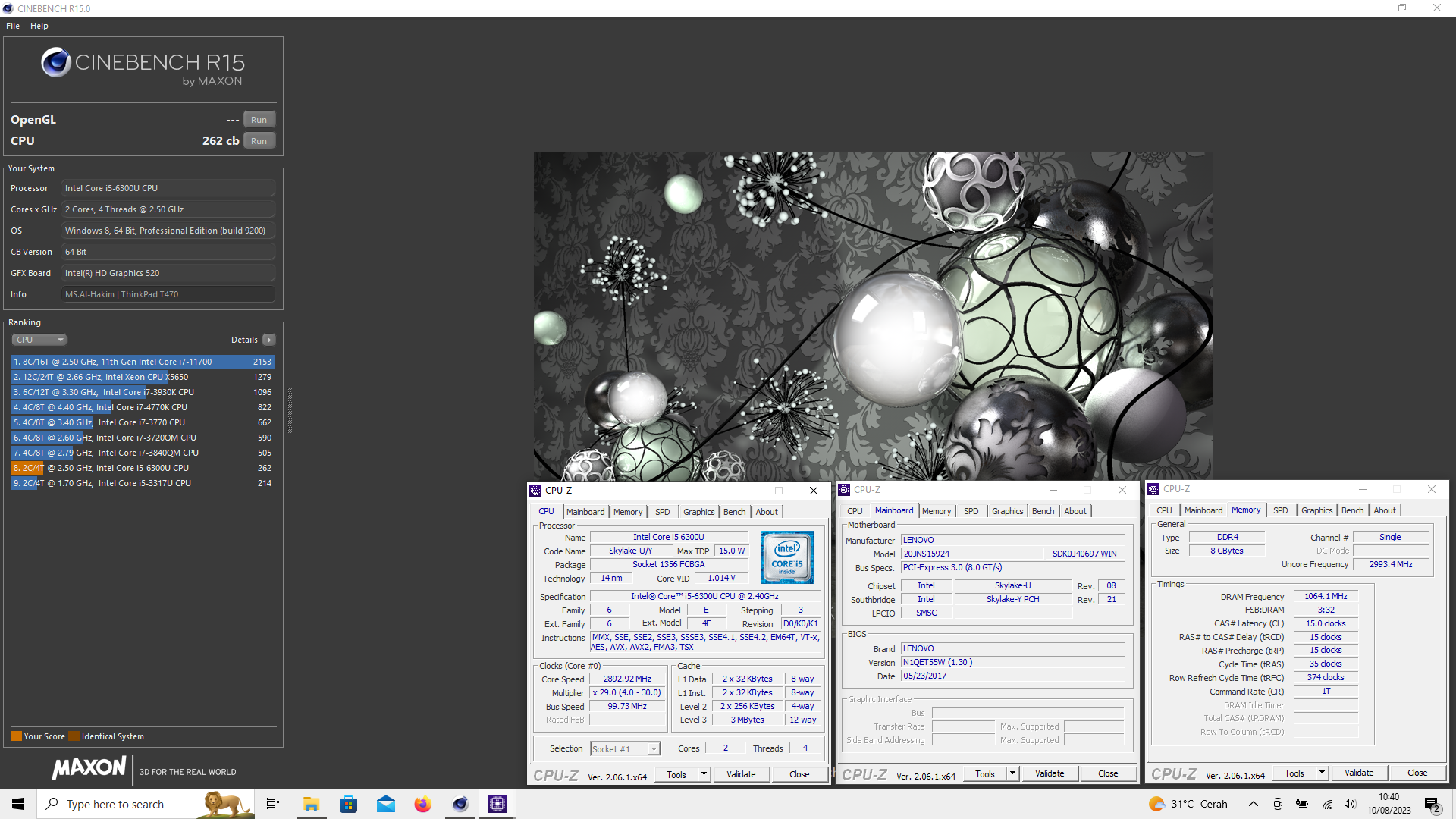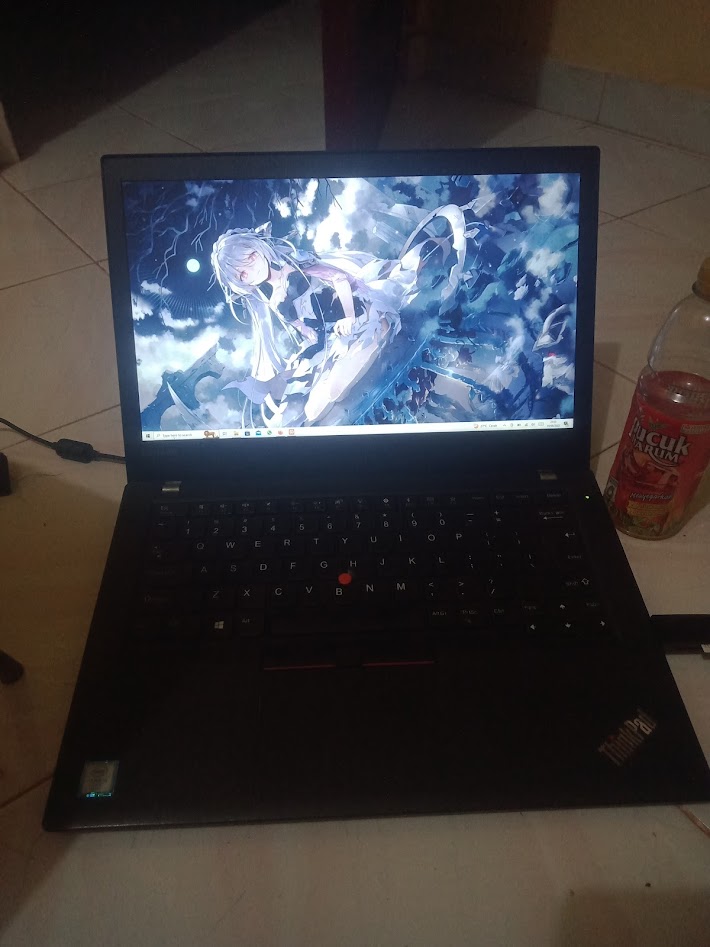Cinebench - R15 score 262 cb with a i5-6300U
Tuesday, 24 October 2023 12:49 | Update at 1 year ago
Media Gallery
Screenshot

Device, Setup, etc


URL
https://hwbot.org/submission/5367600Information Detail
Hardware: Intel Core i5 6300U
Specs:CPUID : Intel(R) Core(TM) i5-6300U
Architecture : x86
Codename : Skylake
L3 Cache : 3 MB
Clock : 2.4GHz - 3GHz
Core/Thread : 2/4
TDP : 15W
Technology : 14nm
Socket : 1356 FCBGA
IGPU : Intel HD Graphics 520 (Mobile)
See more specification...
Software: Cinebench - R15
Score: 262 cb
About: Cinebench - R15Cinebench R15 is one of the most popular CPU and GPU benchmarks developed by Maxon, the creator of CINEMA 4D software. Released at a time when quad-core processors were becoming commonplace, Cinebench R15 quickly became the standard tool for measuring the rendering performance of various types of desktop and laptop processors. This benchmark simulates the process of rendering photorealistic 3D graphics using the CINEMA 4D engine and assigns a score based on how quickly the CPU can complete the task.
In multi-core testing, Cinebench R15 utilizes all available threads and cores on the processor to render a complex scene consisting of over 300,000 polygons. This scene includes area lighting, soft shadows, sharp and blurry reflections, procedural textures, and anti-aliasing. All these elements are designed to place high stress on the entire CPU processing system, creating an environment that closely resembles real-world scenarios in digital content production or professional rendering.
Cinebench R15 scores are measured in “points” (pts), where higher numbers indicate better performance. This benchmark is ideal for evaluating rendering capabilities, multitasking performance, and overall processor efficiency, especially in applications that utilize multiple cores, such as Blender, Adobe Premiere, or CAD software.
Although Cinebench R15 has been replaced by newer versions like R20 and R23, Cinebench R15 is still widely used today due to its broad compatibility, lightweight execution, and consistent results. Especially for reviewers and users looking to compare processors across generations, R15 remains an important benchmark in the world of hardware and PC enthusiasts.
The Intel Core i5-6300U is a dual-core, quad-thread mobile processor that belongs to Intel’s Skylake generation, released in 2015. Designed with power efficiency in mind, the i5-6300U operates at a base clock speed of 2.4 GHz and can dynamically boost up to 3.0 GHz thanks to Intel’s Turbo Boost technology. Built on a 14nm manufacturing process, this processor has a low thermal design power (TDP) of just 15 watts, making it ideal for ultrabooks and slim laptops where battery life and heat management are crucial. The chip features integrated Intel HD Graphics 520, which supports smooth 4K video playback and can handle light gaming and everyday graphical tasks, making it suitable for casual multimedia users.
In practical use, the i5-6300U offers reliable performance for common activities such as web browsing, office productivity software, video streaming, and basic photo editing. It is commonly found in business laptops like the Lenovo ThinkPad T470, equipped with 8GB DDR4 RAM and running Windows 10, providing a smooth user experience for professionals and students alike. Despite its strengths, the i5-6300U’s performance in modern multi-threaded applications and gaming falls behind newer processors due to its limited cores and older architecture. Nevertheless, it remains a solid choice for users prioritizing energy efficiency and portability over raw computing power.
Overall, the Intel Core i5-6300U continues to be a dependable processor in the used laptop market and legacy systems, delivering a good balance of performance and power consumption for everyday computing tasks, especially in ultrabook designs where efficiency is key.
Hardware Detail:
Device: Lenovo ThinkPad T470
RAM: 8GB DDR4 Single Channel
OS: Windows 10
* Not Avaiable
